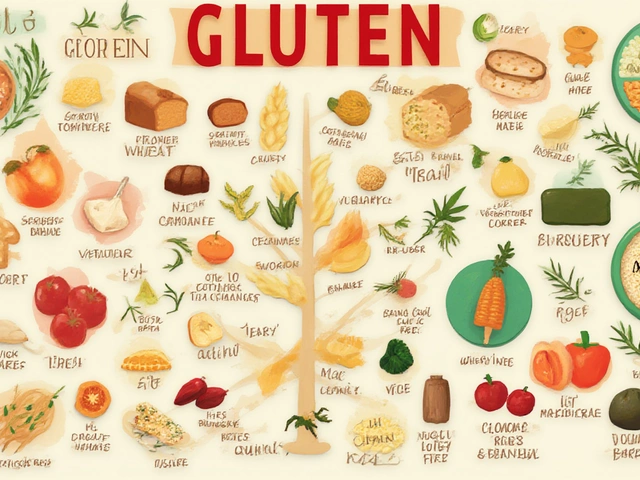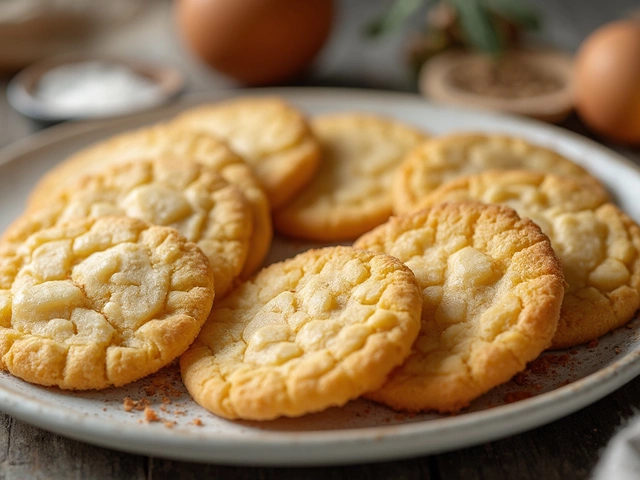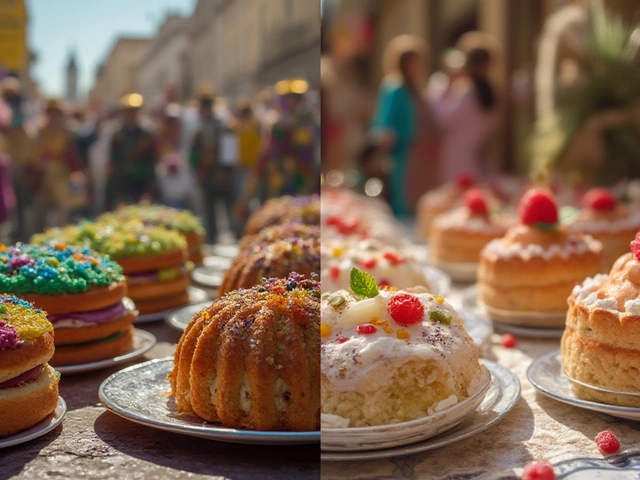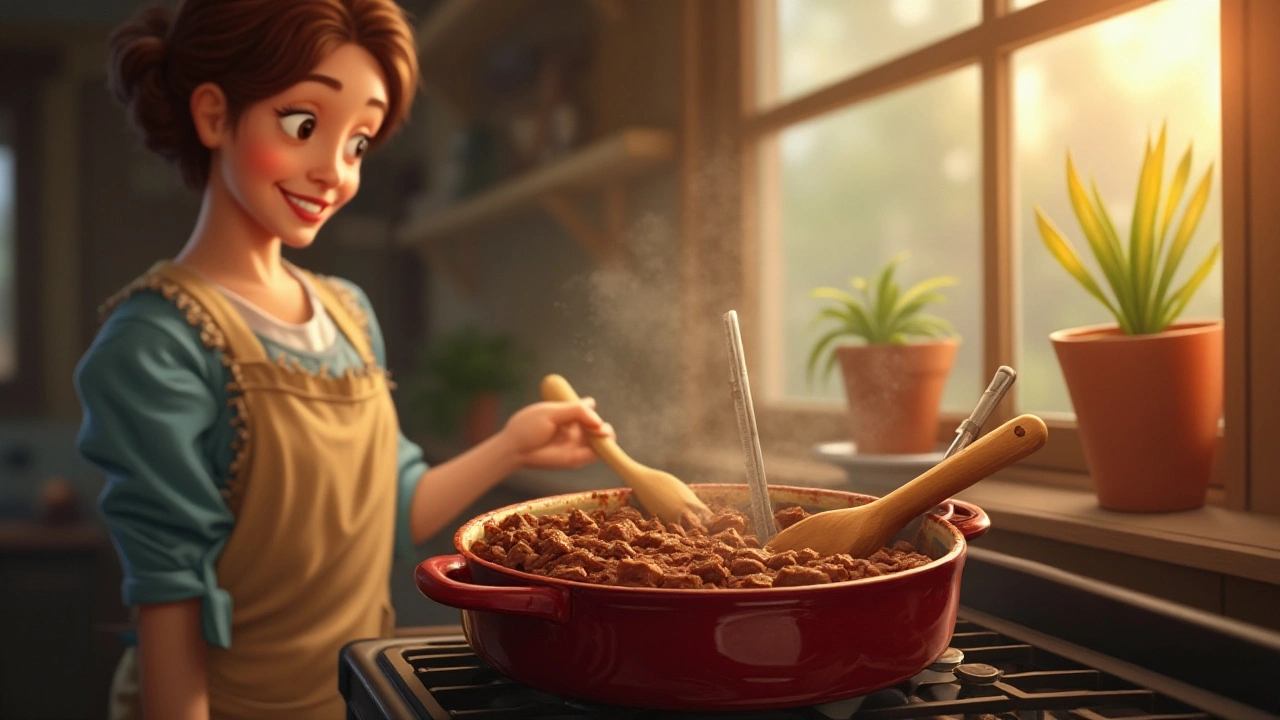
There's something innately comforting about a slab of homemade fudge, wrapped snugly in parchment paper. Its signature creamy texture and rich flavor are nothing short of a culinary cuddle. However, crafting this confectionery delight comes with its own set of challenges, chief among them: knowing exactly when your fudge is done.
To navigate this sweet journey, understanding the nuances and science of fudge-making is key. It's not just about following a recipe; it's about mastering the art and technique. With the right knowledge, you can achieve the perfect consistency, avoiding the dreaded grainy texture or a batch that stubbornly refuses to set.
- The Science of Fudge
- Traditional Testing Techniques
- Modern Methods and Tools
- Troubleshooting Common Pitfalls
The Science of Fudge
When it comes to crafting the perfect batch of fudge, understanding the science behind it is essential. At the heart of making fudge is the wondrous transformation of ingredients under heat, primarily involving sugar crystallization. Sugar, which makes up the bulk of any fudge recipe, behaves in distinct ways under varying temperatures. Typically, you'll heat your mixture to between 234°F to 240°F (known commonly as the 'soft-ball' stage). At this temperature, sugar dissolves fully, and when cooled, it sets into that luscious texture we all adore.
The balance of ingredients is crucial. Sugar needs to dissolve properly to avoid a gritty feeling. This is why recipes often call for stirring until every granule has vanished. Once heated, it's essential to stop stirring. Agitation during the cooling process encourages premature sugar crystallization, which can ruin the texture. Instead, allow the mixture to cool undisturbed until it reaches around 110°F before beating it into fudge.
Various types of sugars, such as granulated or brown sugar, can differ in their reaction to heat and ultimately their roles in crystallization. The type of sugar can play a significant role in your final product. Ever wondered why some fudges have different textures than others? That's often due to the sugar's molecular makeup and the method of handling each type in a recipe.
The role of fats and dairy
Butter and rich creams add depth to fudge's flavor profile, but they also play a vital part in achieving the desired consistency. The fats help to inhibit unwanted crystallization while imparting that smooth, melt-in-the-mouth richness. It's crucial to use fresh cream and quality butter to produce the best outcomes. These ingredients create a barrier around the sugar molecules, allowing for slower crystallization and hence a creamier texture.
"Fudge is an art and a science; understanding the delicate interplay of ingredients and temperatures holds the secret to its magic," says renowned chocolatier, Lindsey Marsal.
Timing, too, is eerily important, as the heat affects not just the sugar, but also the butter and dairy. Overcooking can lead to burnt sugars or scorched dairy products, and undercooking can result in runny, unappealing textures. Constant vigilance and a candy thermometer are your best friends in this endeavor.
As confectionery technology improves, some now use specific tools like digital thermometers to achieve greater accuracy. While tools and techniques evolve, understanding the scientific principles remains crucial for every fudge-making enthusiast. It's this blend of tradition and innovation that makes fudge such a beloved and enduring treat.
Traditional Testing Techniques
Mastering fudge recipes requires a keen eye and patience, especially when it comes to traditional testing techniques. These time-honored methods have been passed down through generations, providing an artisanal way to assess when your fudge is at its peak. Unlike modern gadgets, these techniques require a touch of practice and a bit of intuition. They're not only accessible but also add a personal, hands-on element to the fudge-making process. One popular method is the "cold water test," which involves dropping a small portion of the cooked fudge mixture into a bowl of cold water. As the mixture cools, it should form a soft ball with pliable edges, indicative of a perfect cook.
This method effectively works for those who can gauge the balance between sugar and moisture, a delicate dance that determines the texture of the finished product. Another technique is the use of a simple candy thermometer. Though technically a modern interception, it's been embraced for decades as an auxiliary to traditional methods. The key fudge temperature usually lies around 234 to 240 degrees Fahrenheit. Reaching this range ensures that the mixture has boiled sufficiently and is ready to set to that creamy texture we all crave.
"Good cooking is about choosing the right equipment as much as it is about using the right ingredients," Cook's Illustrated suggests.
Aside from these, a side-by-side approach with a spoon can also offer insight. As the fudge cools, observe the way it coats the back of your spoon. It should be thick, slow to drip, and have a sheen that suggests it’s reached the right consistency. Sometimes even the sound speaks volumes; a clear, distinct popping as the fudge bubbles signals progress. To truly excel, blending these methods can often yield the best results. It's about developing an understanding, a relationship with the fudge itself.
For those who enjoy data and measured outcomes, employing a balance between intuition and scientific precision offers the most robust way to ensure a perfect batch each time. Generations of confectioners have trusted these techniques for making fudge, adapting traditional methods, fine-tuning them to suit their individual needs. By appreciating these tried-and-true practices, you're not just making dessert; you're engaging in a ritual that has delighted taste buds for centuries.
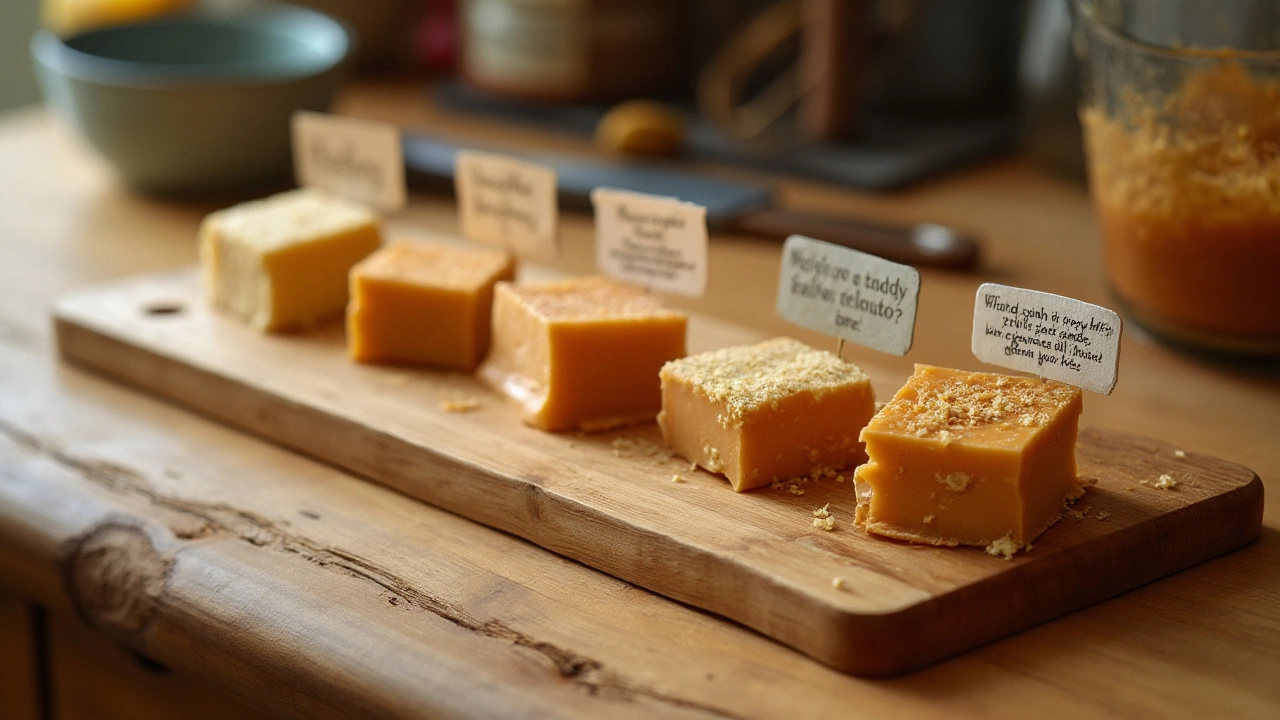
Modern Methods and Tools
In recent years, making fudge recipes has enjoyed a renaissance, with culinary enthusiasts seeking both precision and creativity in the kitchen. Technology has revolutionized how we approach fudge-making, offering tools that make the process both foolproof and engaging. At the heart of these innovations are digital thermometers, a gadget that has become indispensable in the modern candy-making arsenal. With their ability to provide accurate readings to the decimal, they eliminate much of the guesswork traditionally associated with fudge-making.
Digital thermometers are not the only tools that have had an impact. In kitchens around the world, chefs are experimenting with induction cooktops, which provide consistent and even heat, ensuring your sugar mixture reaches the required temperature without hotspots. Induction cooktops, paired with precisely controlled stoves, offer the meticulousness needed for perfect fudge recipes. Consistency is key, and these modern tools ensure the temperature remains stable, preventing sugar from overheating or crystalizing prematurely.
For those who embrace technology further, there are even fudge-making gadgets that automatically stir and cook your mixture to precision. These gadgets have integrated timers and temperature sensors, turning the procedure into an almost set-and-forget experience. Although such gadgets provide convenience, there remains a charm to making fudge by hand, where cooks rely on sensory feel and personal intuition to know when the fudge is done.
"Fudge-making, like any culinary art, benefits immensely from the marriage of tradition with innovation," says Alice Waters, acclaimed chef. "While I love the old-school techniques, embracing new methods can truly enhance our abilities."
Yet, even with all these advancements, the tried and true methods should not be discarded entirely. Tools like silicone spatulas have replaced wooden spoons due to their flexibility and ease of cleaning, which contribute to a smoother fudge-making process. Silicone molds and parchment paper make for convenient storage, minimizing scraping and sticking. As such, while these modern methods and tools significantly contribute to the fudge-making process, they work best alongside the makers' embrace of tradition and touch, creating a delectable treat worthy of sharing.
Troubleshooting Common Pitfalls
Making fudge can be compared to a delicate dance; each step brings its own set of challenges and the potential for missteps. Even experienced confectioners encounter hurdles along the way. Some of the most common pitfalls include grainy texture, fudge not setting, or even a burnt flavor overpowering the rich sweetness. Let's delve into these issues to equip you with the solutions you need for perfect results every time.
Grainy Texture
Nothing is more disappointing than cutting into your beautifully set fudge only to find that it has a sandy texture. Typically, this occurs if the sugar crystals are not dissolved properly, which can happen if the mixture is stirred excessively or if the temperature was too low initially. To prevent sugar crystallization, consider using a wet pastry brush to wipe down any sugar crystals that form on the sides of your pot. Another trick is to add a bit of corn syrup which acts as a cheat sheet, helping to keep those pesky sugar crystals from grouping up.“Great cooking favors the prepared hands,” says culinary expert Jacques Pépin, a reminder that preparation is key even in fudge making.

